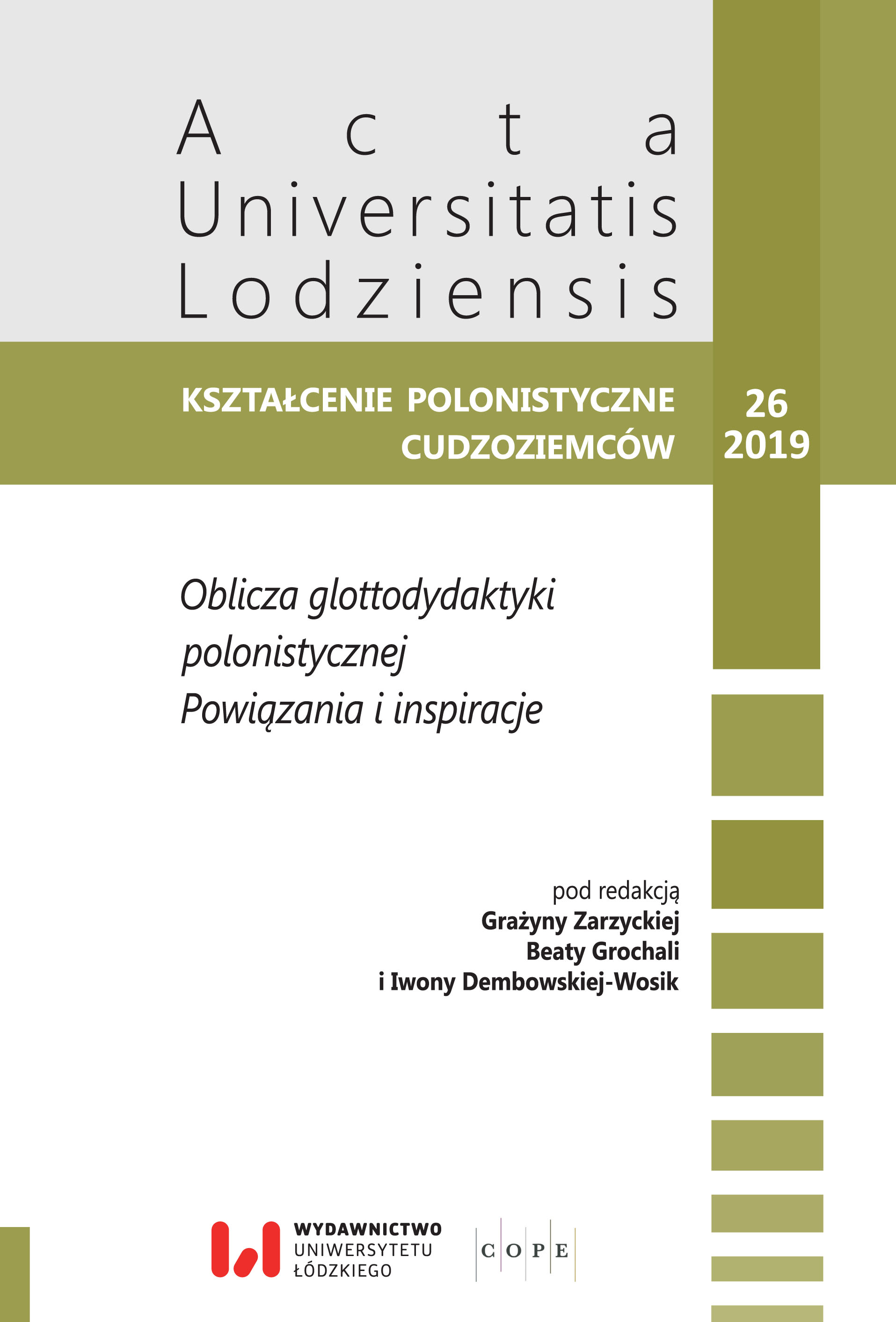Jak mówimy do dzieci? Familijne formuły adresatywne w języku polskim i angielskim
DOI:
https://doi.org/10.18778/0860-6587.26.31Słowa kluczowe:
formuły adresatywne, dzieci, kulturowe scenariusze, kolektywizm, indywidualizm, nauczanie języka polskiego jako obcegoAbstrakt
Przekaz kulturowy w glottodydaktyce przejawia się nie tylko w transmisji wiedzy o tradycjach, zwyczajach czy historii danego kraju, ale również w uwrażliwieniu studentów na podstawowe idee i zachowania obcej kultury. Obecny artykuł przedstawia zasadnicze kontrasty między polską i angielskojęzyczną kulturą i ich wpływ na język używany w gronie rodziny. Polscy rodzice często używają zdrobnień familijnych terminów syn, córka czy dziecko, co nigdy nie zdarza się w angielskojęzycznych rodzinach. Artykuł pokazuje, że te różnice wypływają z różnic kulturowych. Kultura polska jest kulturą kolektywistyczną i jedną z jej podstawowych wartości jest serdeczność. Kultura anglojęzyczna jest kulturą indywidualistyczną, w której niezależność jej naczelną wartością.
Bibliografia
Anstatt T., 2003, Der polnische Vokativ: Aussterbende Kasusform oder produktiv verwendetes Wortbildungsmittel?, “Zeitschrift für Slawistik” 50, pp. 328–347.
Google Scholar
Fernald A., 1985, Four-month-old infants prefer to listen to motherese, “Infant Behavior and Development”, no. 8(2), pp. 181–195.
Google Scholar
Gleitman L. R., Newport E. L. and Gleitman H., 1984, The current status of the motherese hypothesis, “Journal of Child Language”, no. 11, pp. 43–79.
Google Scholar
Hall E. T., 1976, Beyond culture, New York.
Google Scholar
Hock H. H., Joseph B. D., 1996, Language History, Language Change and Language Relationship: An Introduction to Historical and Comparative Linguistics, Berlin.
Google Scholar
Markus H. R., Kitayama S., 1994, The Cultural Construction of Self and Emotion: Implications for Social Behavior, in: S. Kitayama, H. R. Markus (eds.), Emotion and Culture: Empirical Studies of Mutual Influence, Washington D.C., pp. 89–130.
Google Scholar
Matychuk P., 2005, The role of child-directed speech in language acquisition: a case study, “Language Sciences”, no. 27, pp. 301–379.
Google Scholar
Nisbett R. E., 2003, The Geography of Thought: How Asians and Westerners Think Differently... and Why, New York.
Google Scholar
Parrott L. A., 2010, Vocatives and Other Direct Address Forms: A Contrastive Study, in: A. Grønn, I. Marijanovic (eds.), Russian in Contrast, “Oslo Studies in Language”, no. 2, pp. 211–229.
Google Scholar
Pyzik J., 2000, Przygoda z gramatyką: Fleksja i słowotwórstwo imion, Kraków.
Google Scholar
Sun L., 2013, Culture teaching in foreign language teaching, “Theory and Practice in Language Studies”, no. 3(2), pp. 371–375.
Google Scholar
Szymczak M., 1966, Nazwy stopni pokrewieństwa i powinowactwa rodzinnego w historii i dialektach języka polskiego, Warszawa.
Google Scholar
Wierzbicka A., 1992, Semantics, Culture and Cognition: Universal Human Concepts in Culture- Specific Configurations, Oxford.
Google Scholar
Wierzbicka A., 1999, Emotions Across Languages and Cultures: Diversity and Universals, Cambridge.
Google Scholar
Yokoyama O., 1994, Iconic manifestations of interlocutor distance in Russian, “Journal of Pragmatics”, no. 22, pp. 83–102.
Google Scholar
Zaleski J., 1963, Rozwój form wołacza żeńskich rzeczowników osobowych typu Marysia, Anulka, paniusia,“Onomastica”, no. 8, pp. 261–291.
Google Scholar
British National Corpus (BNC) http://www.natcorp.ox.ac.uk/
Google Scholar
The Corpus of Contemporary American English (COCA) http://corpus.byu.edu/coca/ [28.08.2019].
Google Scholar
Narodowy Korpus Języka Polskiego (NKJP) http://nkjp.uni.lodz.pl/index.jsp [28.08.2019].
Google Scholar
Pobrania
Opublikowane
Jak cytować
Numer
Dział
Licencja

Utwór dostępny jest na licencji Creative Commons Uznanie autorstwa – Użycie niekomercyjne – Bez utworów zależnych 4.0 Międzynarodowe.










